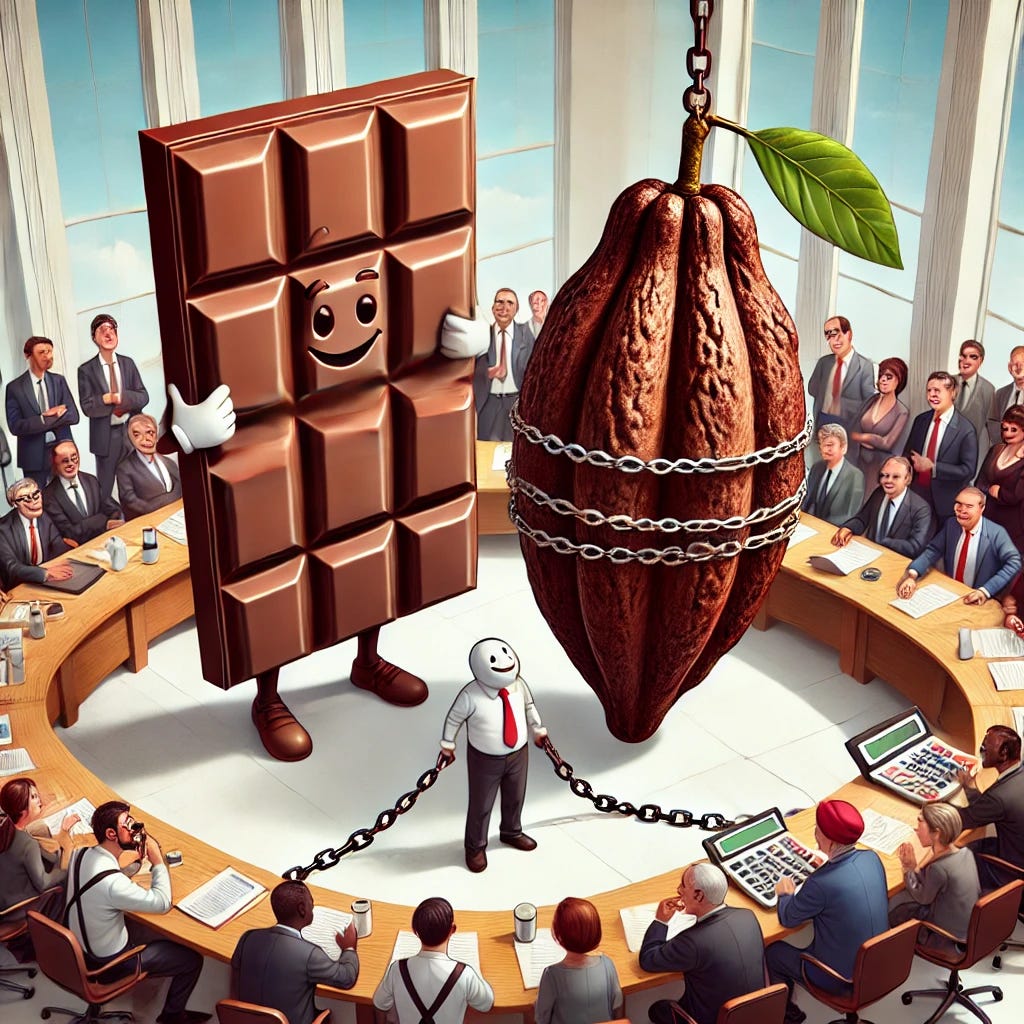There are many ongoing discussions about a "fair price" for cocoa farmers. Conferences are held, reports are published, and experts debate how much farmers should be paid for their cocoa. But strangely, no one ever asks what a “Fair Price” for Nestlé, Mars, Mondelez, or Ferrero chocolate bars should be. Internal strategies, brand positioning, and market demand set their prices. No global committee convenes to decide if KitKat is too expensive or if Cadbury should lower its retail price. Yet, when it comes to cocoa farmers, the ones actually producing the core product required, suddenly, the whole world needs to gather around the table to decide what they should earn for a gram of bean.
Why does the industry insist on a standardised price for cocoa, when cocoa farmers live in vastly different economic conditions, climates, and cost structures? Meanwhile, on supermarket shelves, chocolate bars from the same manufacturer can have completely different prices, based on branding, packaging, and marketing and even sometimes how much they pay their staff. Dont we see “Living income wage employer” tags in Europe. It’s an irony so deep that it exposes the entire system as a deliberately maintained economic trap.
Industry runners argued that cocoa prices must be standardised because of global trade mechanisms, and that fluctuating prices are just an unfortunate consequence of free markets. But if that’s true, why isn’t there a "market-determined" price for chocolate bars? Why do the same companies that fight to ensure cocoa remains a low-cost, commodified product enjoy the freedom to set their own chocolate prices with zero external intervention?
When you walk into a supermarket, you’ll notice that a Mondelez chocolate bar may cost $1, while a high-end artisanal brand charges $10 for a similar product. No one questions these differences. No regulatory body determines a fair "global chocolate price" to ensure that all consumers pay the same amount for their treat. And yet, cocoa, without which chocolate would not exist, is expected to have a universal price, despite the fact that farmers operate in vastly different conditions, have different production costs, and face different economic realities.
Take the grocery industry as another example. Tesco, Aldi, and Lidl exist in the same market and sell the same products from the same suppliers, yet each has a different pricing model. No one questions why the same bottle of milk or loaf of bread costs differently depending on the brand and store. The market accommodates price flexibility, so why is cocoa, the lifeblood of an entire industry, locked into a rigid pricing structure that is consistently engineered to favor buyers and corporate processors over producers?
It can be argued that different chocolate brands can charge differently because of their costs, advertising, branding, and value-added processing. But this argument collapses when you realise that farmers, too, have different costs.
Some farmers operate in regions with poor infrastructure, where transporting cocoa is expensive.
Some have to pay for expensive fertilizers and labor to maintain their crops.
Some face high taxation and government levies, while others don’t.
Yet, all these farmers are forced to sell at a single global price, while chocolate companies have the freedom to set prices however they wish. Why is pricing flexibility reserved for corporations but denied to the people growing the actual crop?
What makes this hypocrisy even more glaring is the fact that multinational chocolate manufacturers never disclose their own pricing formulas. No one knows the real cost of making a Snickers bar or a Lindt truffle, nor how much profit each company makes from its sales. Yet, these same corporations feel entitled to demand transparency and "fair pricing models" for farmers, often under the guise of sustainability initiatives that do little to actually increase farmers’ earnings.
Keep reading with a 7-day free trial
Subscribe to Cocoa Diaries Newsletter to keep reading this post and get 7 days of free access to the full post archives.




